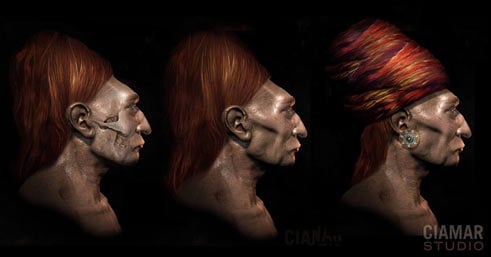| Online: | |
| Visits: | |
| Stories: |

| Story Views | |
| Now: | |
| Last Hour: | |
| Last 24 Hours: | |
| Total: | |
Initial DNA analysis of Paracas elongated skull released – with incredible results
Paracas is a desert peninsula located within the Pisco Province in the Inca Region, on the south coast of Peru. It is here were Peruvian archaeologist, Julio Tello, made an amazing discovery in 1928 – a massive and elaborate graveyard containing tombs filled with the remains of individuals with the largest elongated skulls found anywhere in the world. These have come to be known as the ‘Paracas skulls’.
The Paracas skulls, however, are different. The cranial volume is up to 25 percent larger and 60 percent heavier than conventional human skulls, meaning they could not have been intentionally deformed through head binding/flattening.
They also contain only one parietal plate, rather than two. The fact that the skulls’ features are not the result of cranial deformation means that the cause of the elongation is a mystery, and has been for decades.

Mr. Juan Navarro, owner and director of the local museum, called the Paracas History Museum, which houses a collection of 35 of the Paracas skulls, allowed the taking of samples from 5 of the skulls. The samples consisted of hair, including roots, a tooth, skull bone and skin, and this process was carefully documented via photos and video. Samples from three skulls were sent to the geneticist, although the geneticist was not given any information about what they came from until after the genetic testing, so as not to create any preconceived ideas.
The results of a DNA analysis of one of the skulls are now back, and Brien Foerster, author of more than ten books and an authority on the ancient elongated headed people of South America, has just revealed the preliminary results of the analysis. He reports on the geneticist's findings:
It had mtDNA (mitochondrial DNA) with mutations unknown in any human, primate, or animal known so far. But a few fragments I was able to sequence from this sample indicate that if these mutations will hold we are dealing with a new human-like creature, very distant from Homo sapiens, Neanderthals and Denisovans.
The implications are of course huge. “I am not sure it will even fit into the known evolutionary tree,” the geneticist wrote. He added that if the Paracas individuals were so biologically different, they would not have been able to interbreed with humans.
The result of this analysis is only phase one of many phases of analysis due to take place. The next tests will involve having the initial test replicated, and conducted on other skulls, so that the results can be compared to see if there are any specific Paracas characteristics. We will update when more details emerge.
Watch the video interview with Brien Foerster revealing new details about the genetic analysis.
Source: http://vaticproject.blogspot.com/2015/04/initial-dna-analysis-of-paracas.html




